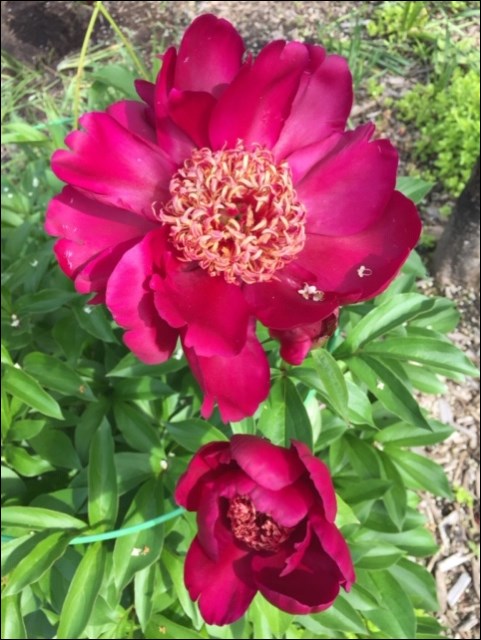Several members of a perennial plant in my garden have an ancient history. Although wild species grew from Europe to China and Japan via Siberia, the Caucasus and northern India, this plant has been cultivated for over 1,500 years in China. Cultivars from China eventually made their way to Europe and North America, where they have been appreciated since the early 1800s.
This is a hardy plant well-suited to our climate. It requires a winter to grow, so you won’t find it in gardens in Florida or southern California. The species seem to prefer a harsh climate, even growing on lower slopes of the Himalayas in Tibet. But it is Paeonia lactiflora, the Chinese peony, that is the species from which most cultivars have been developed. The other peony familiar is Paeonia tenuifolia, the fern-leaved peony from the Caucasus in Europe that was mentioned in a catalogue as early as 1757.
There is a wide selection of peony cultivars, although only a few are commonly available in nurseries. Peonies can be purchased in pots or as bare root plants. A wider selection is available by mail order from nurseries specializing in peonies. The plant can be left in place for many years with no need to divide them. With this in mind, it is important to take proper care to select the site, prepare the soil and plant your peony.
Peonies prefer at least six hours of sunlight. The fully double varieties benefit from some wind protection, but they still require good air circulation.
Peonies are scented, so you may wish to place them near a seating area. Plant in humus rich, well-draining soil augmented with well-composted manure, but the manure should not touch the tubers. Plant the crown no more than two inches below the soil or your peony may not bloom. Water well and mulch the root zone, but do not place mulch on top of the crown. It may take a year or two for your new peony to bloom, especially if you planted a bare root peony.
Peonies require support to prevent the flowers from flopping to the ground. To fertilize, side-dress the plants with well-rotted manure every spring. Peonies do not like to be transplanted, but if necessary, transplant in early fall.
There are thousands of cultivars from single to fully double mop heads, some of which have sturdy enough stems to hold the heavy flowers upright. They are all beautiful, but the singles are my favourite.




